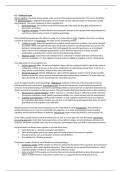Summary
Summary H1-15 Social Cognition and Affect: From Brains to Culture
- Course
- Institution
- Book
Summary of the book Social Cognition and Affect: From Brains to Culture (4th edition), by Fiske and Taylor. Includes chapters 1-15 excl. 11 and 12.
[Show more]



